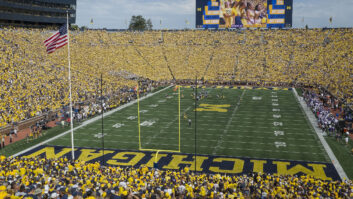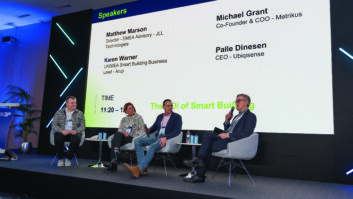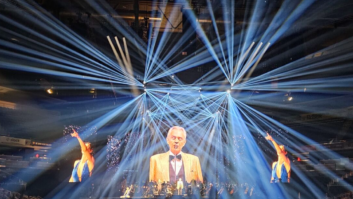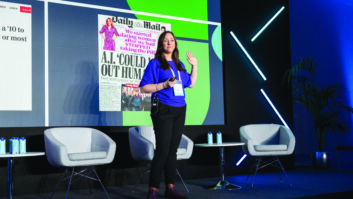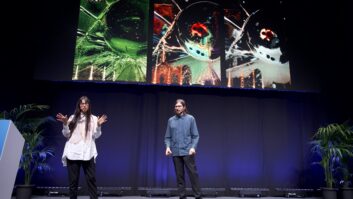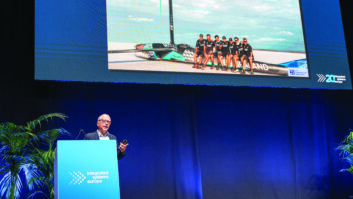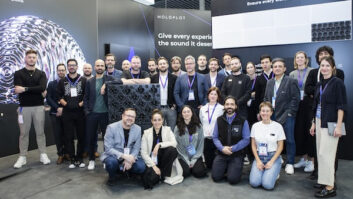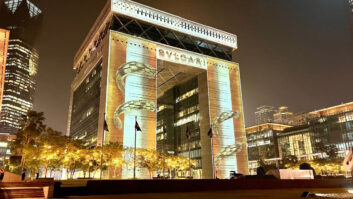The exterior of the 828m-high Burj Khalifa is illuminated by Dataflash strobe lights and Fineline searchlights, with control from an ETC Congo Light Server. The impressive lighting design for the Burj Khalifa – which was formally opened to much global interest in January – was devised by Speirs and Major Associates (SaMA).
Specifically, the lighting consists of more than 800 Dataflash strobe lights and six Fineline searchlights, controlled by an ETC Congo Light Server and triggered by an ETC Unison Paradigm system featuring touchscreens and automated astronomical time-clock events. The control system was provided by Oasis Enterprises Professional Projects Division, ETC’s distributor in the UAE.
Employed during the grand opening celebration earlier this year, the Celebration Lighting system was programmed almost entirely offline – and across countries (Scotland and Germany) – using Capture visualisation software, with various patterns running on a nightly basis.
“We essentially programmed this show via Skype,” said ETC Controls product manager and Congo programmer Sarah Clausen. “SaMA worked for weeks to create the model and get all the strobes inserted, focused and patched, while I worked to channel and group the strobes into usable chunks to create the effects we needed. Then they sent me a video mock up of the kinds of effects they wanted. I worked for 10 days in our Germany office to build up the effects in Congo. The v5 Effects were essential to this project – some of SaMA’s ideas actually need 42 effect playbacks running simultaneously to create the right look.
During the programming I had Capture, a Congo desk and a single Dataflash AF1000 strobe. Iain Ruxton at SaMA had a set-up with Capture, a Congo jr and another Dataflash. I could program something, send him the show file, he could load it and look at it with the team there. We could see the same thing running at the same time, discuss adjustments and then I could go on programming on my own. It worked very well. Once we were on site in Dubai we only had to adjust a few timings and then could get on with the business of creating the specific combinations of effects for the nightly shows.”
Iain Ruxton, associate at SaMA, added: “We’ve envisaged working like this on dynamic architectural lighting projects ever since we first saw DMX visualiser packages more than a decade ago. Although it’s intended as performance technology, we were keen to scale it up to big buildings. We’ve done some smaller projects with visualisation and we used Capture and Congo together on the Grand Mosque in Abu Dhabi. It was invaluable in planning the focus and the show framework there, but the Burj Khalifa is the first time we’ve programmed dynamic lighting of this complexity on a completely virtual building, without designer and programmer being in the same country. Quite simply, we could not have achieved this by programming on site only.”
Image Credit: © Naiyyer | Dreamstime.com
